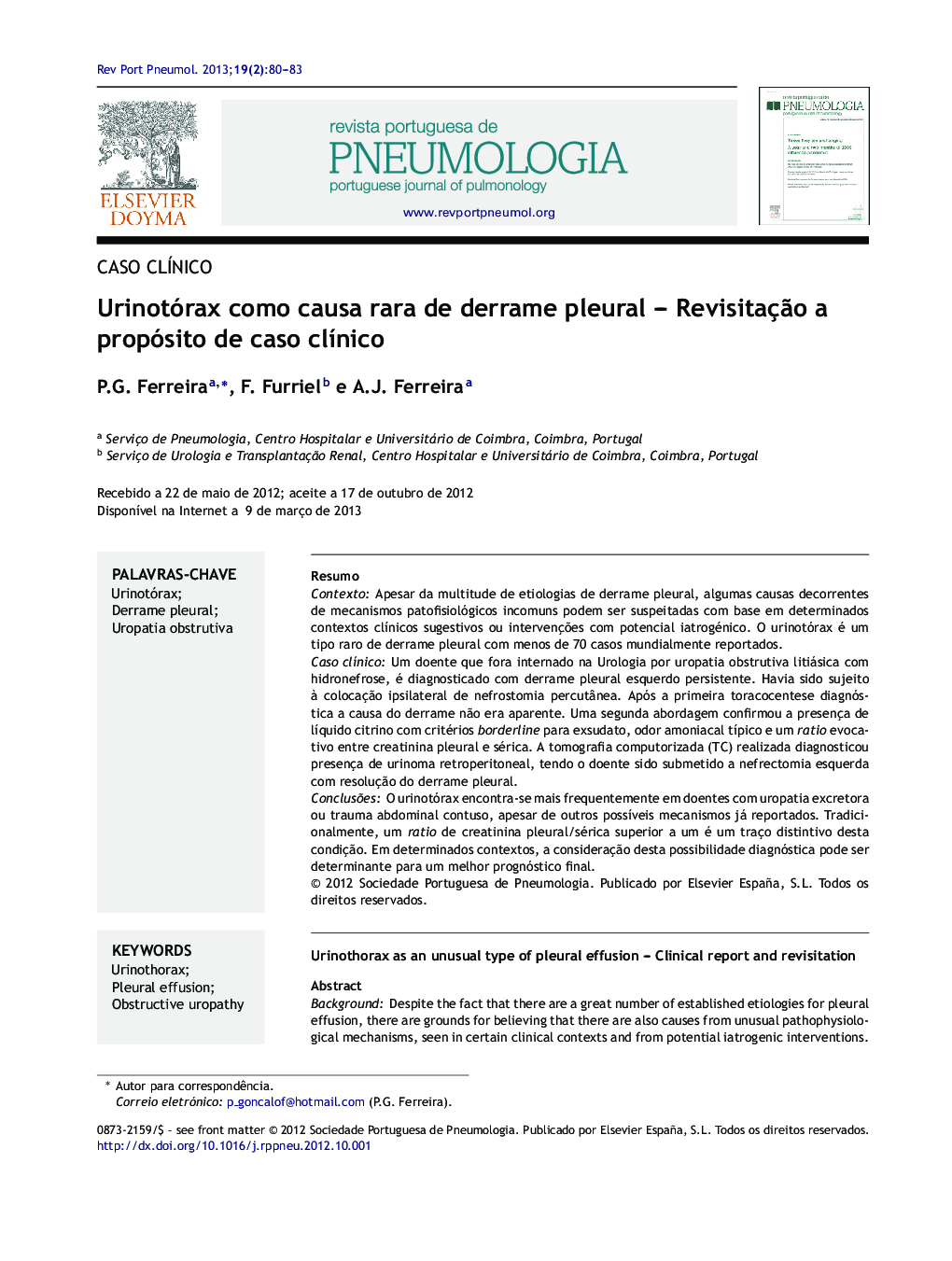| Article ID | Journal | Published Year | Pages | File Type |
|---|---|---|---|---|
| 4213739 | Revista Portuguesa de Pneumologia | 2013 | 4 Pages |
ResumoContextoApesar da multitude de etiologias de derrame pleural, algumas causas decorrentes de mecanismos patofisiológicos incomuns podem ser suspeitadas com base em determinados contextos clínicos sugestivos ou intervenções com potencial iatrogénico. O urinotórax é um tipo raro de derrame pleural com menos de 70 casos mundialmente reportados.Caso clínicoUm doente que fora internado na Urologia por uropatia obstrutiva litiásica com hidronefrose, é diagnosticado com derrame pleural esquerdo persistente. Havia sido sujeito à colocação ipsilateral de nefrostomia percutânea. Após a primeira toracocentese diagnóstica a causa do derrame não era aparente. Uma segunda abordagem confirmou a presença de líquido citrino com critérios borderline para exsudato, odor amoniacal típico e um ratio evocativo entre creatinina pleural e sérica. A tomografia computorizada (TC) realizada diagnosticou presença de urinoma retroperitoneal, tendo o doente sido submetido a nefrectomia esquerda com resolução do derrame pleural.ConclusõesO urinotórax encontra-se mais frequentemente em doentes com uropatia excretora ou trauma abdominal contuso, apesar de outros possíveis mecanismos já reportados. Tradicionalmente, um ratio de creatinina pleural/sérica superior a um é um traço distintivo desta condição. Em determinados contextos, a consideração desta possibilidade diagnóstica pode ser determinante para um melhor prognóstico final.
BackgroundDespite the fact that there are a great number of established etiologies for pleural effusion, there are grounds for believing that there are also causes from unusual pathophysiological mechanisms, seen in certain clinical contexts and from potential iatrogenic interventions. Urinothorax is such a rare type of pleural effusion as there are fewer than 70 cases reported worldwide.Clinical caseA patient with a persistent left pleural effusion was admitted to the Urology ward for a lithiasic obstructive uropathy with hydronephrosis. A left percutaneous nephrostomy was performed. The effusion was unclassified at the initial workup and recurred after first drainage. A second approach confirmed a citrine fluid with borderline criteria for exudate, ammoniacal odour and an elusive pleural fluid-to-serum creatinine ratio. A retroperitoneal urinoma was recognized on CT, and the patient underwent a left nephrectomy with resolution of the pleural effusion.ConclusionsUrinothorax most frequently develops in patients with excretory uropathy or blunt abdominal trauma, although other mechanisms have been reported. Traditionally, a pleural fluid to serum creatinine ratio higher than one is a hallmark of this condition. In certain settings, taking this diagnosis into account at an early stage might be crucial for a good outcome.
